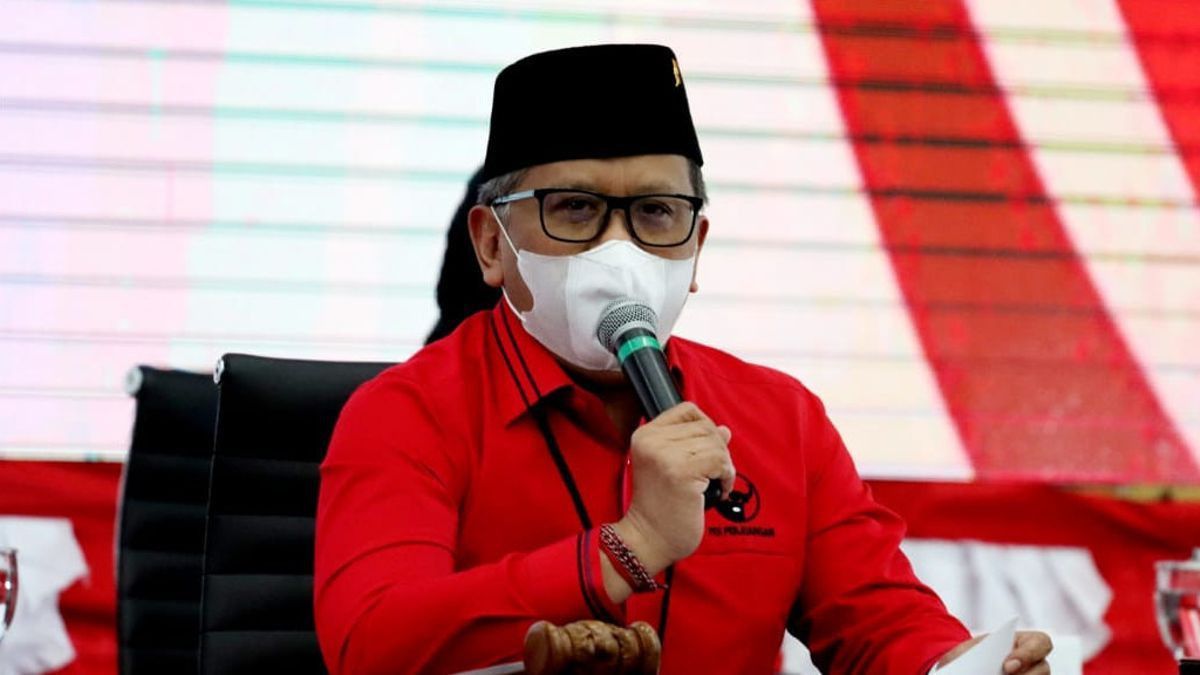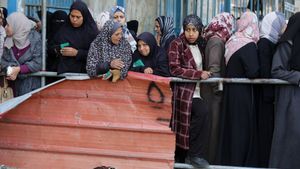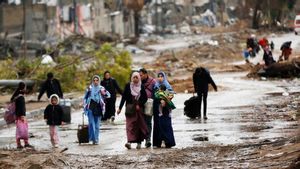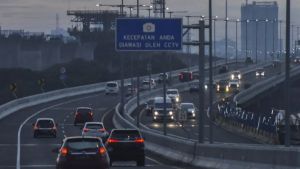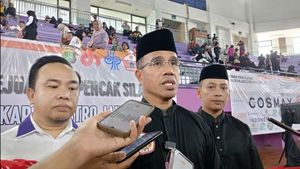JAKARTA - Some areas in DKI Jakarta are surrounded by floods. Secretary-General of the PDI Perjuangan (PDIP) DPP, Hasto Kristiyanto, assessed that the Jakarta floods will not end because of the assumption that water will enter the earth.
"Talking about the Jakarta floods, I am also a criticism, because of the wrong assumption that the water will enter the earth. That was what was conveyed during the campaign", said Hasto in PDI Perjuangan Youtube, Saturday, February 20.
In this case, Hasto teased DKI Jakarta Governor Anies Baswedan. During the 2017 DKI governor election campaign, Anies admitted that he did not agree with the water flow infrastructure in DKI.
Anies said at that time, handling floods in Jakarta must be done by ensuring that the existing water seeps into the ground. It is different from the concept of infrastructure development which seeks to flow water smoothly into the sea.
Hasto said floods in Jakarta were a matter of management, a problem of spatial planning, and a matter of courage in making decisions.
"It must really pay attention to the weather aspect. This is what the regional head of the PDI Perjuangan because he has such a wide opportunity to discuss environmental aspects, will automatically develop a culture to care for the environment well", said Hasto.
This morning, DKI Jakarta Governor Anies Baswedan held a coordination meeting at Manggarai Water Gate, South Jakarta regarding the Jakarta floods today.
After reviewing the water level from his staff's report, Anies said that the flooding in the capital city, especially in East Jakarta and South Jakarta today was caused by extreme weather and high rainfall.
Anies explained that the rainfall in Pasar Minggu reaches 226 mm per day, in Sunter Hulu 197 mm, at Halim Perdanakusuma it reaches 176 mm, and Lebak Bulus 154 mm.
"All numbers above 150 are extreme conditions. In the division of the scale, there is heavy rain up to 100 mm, then, 100 mm-150 mm is very heavy and above 150 mm is extreme rain", said Anies at Manggarai Water Gate.
Unfortunately, said Anies, the drainage system in DKI is built with a rainfall capacity of between 50 and 100 millimeters per day. Drainage in the area is unable to accommodate water with high rainfall, resulting in water overflows to settlements.
"The capacity of the drainage system in Jakarta ranges from 50 to 100 mm. If it rains above 100 mm per day, then inundation will definitely occur because the capacity is limited to 100 mm", he said.
The English, Chinese, Japanese, Arabic, and French versions are automatically generated by the AI. So there may still be inaccuracies in translating, please always see Indonesian as our main language. (system supported by DigitalSiber.id)
